While it might be tempting to pop a pimple right when you see one forming or visible on skin, it’s a major skincare red flag, as squeezing and irritation can lead to damage and potential scarring. That’s where pimple patches come in. Using a pimple patch is a simple and non-invasive way to get rid of pimples,
manage breakouts and promote a more smooth and rapid recovery.
Patches come in many forms and sizes to broadly accommodate skin conditions and areas. Keep dots for spot targeting, shapes for large or specific areas (such as the chin, forehead or cheeks) and types, like patches for surface pimples and dark spot healing, ready at home to handle any zit. Whether it’s a whitehead,
blackhead or cyst, there’s a patch to treat it.
It’s easy to choose a patch designed by type of pimple and purpose. While some pimples tend to be worrisome, when it comes to popping, avoid the urge and use a patch instead. Either way, it’s better for skin health and appearance.
Here’s everything to know about pimple patches and how they work on skin to treat acne, along with some of the best products to try, as recommended by a dermatologist.
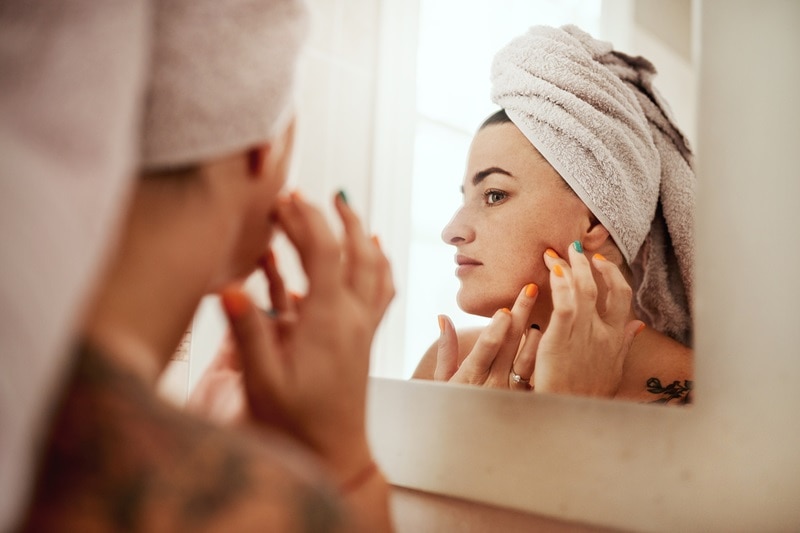
How Do Pimple Patches Work?
“Pimple patches are small adhesive stickers designed to cover acne blemishes and work by creating a protective barrier over the pimple, which prevents bacteria and other contaminants from entering,”
Anna Chacon, MD, FAAD, a board-certified dermatologist based in Miami says.
This sterile environment helps speed the healing process for a healthy repair. Additionally, many pimple patches are made with other beneficial skincare ingredients to further
ease inflammation, enhance spot treatment and prevent skin damage. Examples include
tea tree and hydrocolloid.
“Some pimple patches contain hydrocolloid material that absorbs excess fluid and reduces inflammation, offering benefits including reducing the urge to pick at the skin, minimizing scarring and promoting faster healing,” Chacon says.
The ramifications of popping pimples and squeezing skin, particularly with certain types of acne, can be dangerous for skin health and appearance. For example,
cystic acne typically appears due to hormonal issues, and may need ointments and topicals as suggested by a dermatologist to safely treat and manage breakouts.
“Squeezing pimples can lead to many undesirable outcomes, including increased inflammation, infection and scarring, which is particularly true for deeper acne lesions, such as cysts or nodules, which do not have a clear head and are more prone to spreading bacteria deeper into the skin,” Chacon explains.
Pimple patches work to prevent this by absorbing pus and oil, which speeds the healing process without causing physical damage. There are several types of patches to try and keep at home.
Different Types of Pimple Patches
Common and popular pimple patches include medicated and non-medicated dots, patches for on the surface pimples, patches that come in shapes and sizes to cover large areas as well as microneedling and dark spot correction dots. However, there are tons more to explore, too.
Medicated dots
Often with tea tree and hydrocolloid, medicated dots provide substantial healing benefits. They’re great for pimples as tea tree oil has natural antibacterial properties to help reduce acne-causing bacteria, stress and inflammation levels. (You can also use a
cream for relief and acne-prone skin.) Hydrocolloid absorbs excess fluid to reduce inflammation and boost recovery so pimples heal faster. Chacon suggests using hydrocolloid and tea tree patches on inflamed or pus-filled pimples.
Non-medicated dots
These are ideal for people with sensitive skin or who prefer a natural approach since they’ll protect the pimple from external irritants and prevent picking without the use of additional ingredients and medication. Chacon suggests using these to minimize irritation and allow the pimple to heal naturally. It’s minimal but still effective.
Dots for surface pimples
“These are best for whiteheads or pimples with a visible head, indicating they are ready to drain, and they help absorb pus and reduce the size of the pimple overnight,” Chacon explains.
For those white heads with a pus-filled dot staring right at you just waiting to be popped, refrain and grab a pimple patch for quick, easy and harmless fix.
Large patches
Designed for broader areas like the chin, nose or cheeks, they’re useful for treating multiple pimples or larger areas of congestion. While not necessarily more effective than dots, they provide coverage for larger problem areas and can be worn overnight. It can take care of a few pimples more efficiently and simultaneously, if needed.
Dark spot/microneedling dots
“These are used for post-acne
dark spots and deeper skin imperfections, as the microneedles help deliver active ingredients deeper into the skin to assist in promoting healing and reducing pigmentation,” Chacon says.
Tips for Using Pimple Patches
Pimple patches can be used daily or as needed – basically whenever pimples appear. Typically, they should be worn for at least 6-8 hours or overnight for best results, which is why people use them often in an evening skincare routine. You can also wear them in the day and find clear dots that aren’t very noticeable to wear with a full face of makeup, if needed.
A great tip for choosing which pimple patch is best is to consider specific skin tone and type, Chacon notes. Consider your skin type and the specific issue you are addressing (inflammation, dark spots, cystic acne, etc.) for a tailored approach and treatment plan to improve results. And, don’t overdo it by keeping pimple patches on for too long, since it may potentially backfire.
“Avoid wearing them for more than 12 hours to prevent skin irritation,” Chacon says.
You should also keep skin clean before and after use and incorporate other topicals as part of a daily routine to further promote effectiveness and healing. Cleanse and dry the pimple and area before applying the patch. Never use dots or patches on dirty skin or if it contains makeup.
Once ready to remove hours later, follow up with a
gentle moisturizer to lock in hydration and suppleness. This tip from Chacon not only boosts healing from patches but also helps maintain good skin health and appearance due to management in order to combat anti-aging effects.
Best Pimple Patches To Try
Aim for variety and consider these excellent picks, which Chacon recommends.
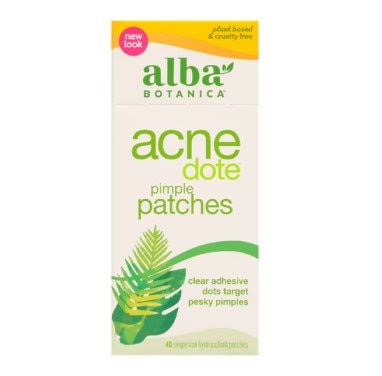
“These patches are a great choice because they combine the power of naturally derived ingredients with hydrocolloid technology to effectively absorb impurities and reduce inflammation, thus providing a gentle yet effective treatment for acne-prone skin,” Chacon says.
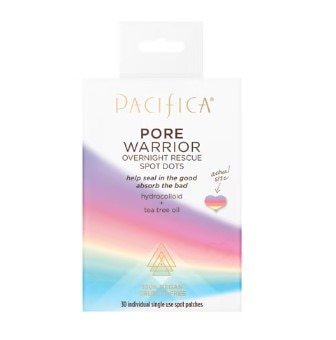
Pacifica's spot dots are infused with skin-loving ingredients like
tea tree oil and
witch hazel, two properties known to help reduce redness and swelling. If applied overnight, they’re excellent for efficiently removing blemishes and using a natural, quick and non-invasive route.
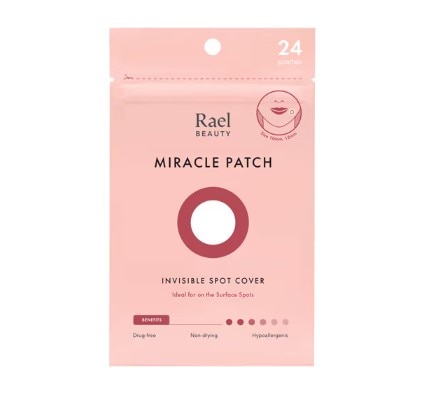
The Rael Beauty Miracle Patch is designed with an ultra-thin hydrocolloid material, making it nearly invisible on the skin. However, it’s great at effectively protecting and healing blemishes by absorbing excess fluids and reducing the risk of scarring or other skin damage.
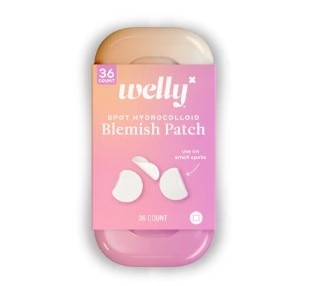
These patches are known for their fun designs and effective results, offering a unique blend of style and function that encourages consistent use while providing a protective barrier to speed up the pimple’s healing process.
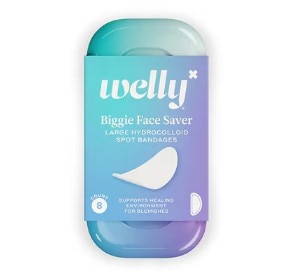
Ideal for larger problem areas, the Welly Biggie Face Saver patches cover more skin, allowing for comprehensive treatment of multiple blemishes at once. This promotes a faster and more uniform healing process across the entire affected area. Plus, it takes care of problem areas at once to save time and blemish dot supply. Just think of how many dots you’d have to use. A lot.
 “These patches are a great choice because they combine the power of naturally derived ingredients with hydrocolloid technology to effectively absorb impurities and reduce inflammation, thus providing a gentle yet effective treatment for acne-prone skin,” Chacon says.
“These patches are a great choice because they combine the power of naturally derived ingredients with hydrocolloid technology to effectively absorb impurities and reduce inflammation, thus providing a gentle yet effective treatment for acne-prone skin,” Chacon says.
 Pacifica's spot dots are infused with skin-loving ingredients like tea tree oil and witch hazel, two properties known to help reduce redness and swelling. If applied overnight, they’re excellent for efficiently removing blemishes and using a natural, quick and non-invasive route.
Pacifica's spot dots are infused with skin-loving ingredients like tea tree oil and witch hazel, two properties known to help reduce redness and swelling. If applied overnight, they’re excellent for efficiently removing blemishes and using a natural, quick and non-invasive route.
 The Rael Beauty Miracle Patch is designed with an ultra-thin hydrocolloid material, making it nearly invisible on the skin. However, it’s great at effectively protecting and healing blemishes by absorbing excess fluids and reducing the risk of scarring or other skin damage.
The Rael Beauty Miracle Patch is designed with an ultra-thin hydrocolloid material, making it nearly invisible on the skin. However, it’s great at effectively protecting and healing blemishes by absorbing excess fluids and reducing the risk of scarring or other skin damage.
 These patches are known for their fun designs and effective results, offering a unique blend of style and function that encourages consistent use while providing a protective barrier to speed up the pimple’s healing process.
These patches are known for their fun designs and effective results, offering a unique blend of style and function that encourages consistent use while providing a protective barrier to speed up the pimple’s healing process.
 Ideal for larger problem areas, the Welly Biggie Face Saver patches cover more skin, allowing for comprehensive treatment of multiple blemishes at once. This promotes a faster and more uniform healing process across the entire affected area. Plus, it takes care of problem areas at once to save time and blemish dot supply. Just think of how many dots you’d have to use. A lot.
Ideal for larger problem areas, the Welly Biggie Face Saver patches cover more skin, allowing for comprehensive treatment of multiple blemishes at once. This promotes a faster and more uniform healing process across the entire affected area. Plus, it takes care of problem areas at once to save time and blemish dot supply. Just think of how many dots you’d have to use. A lot.





